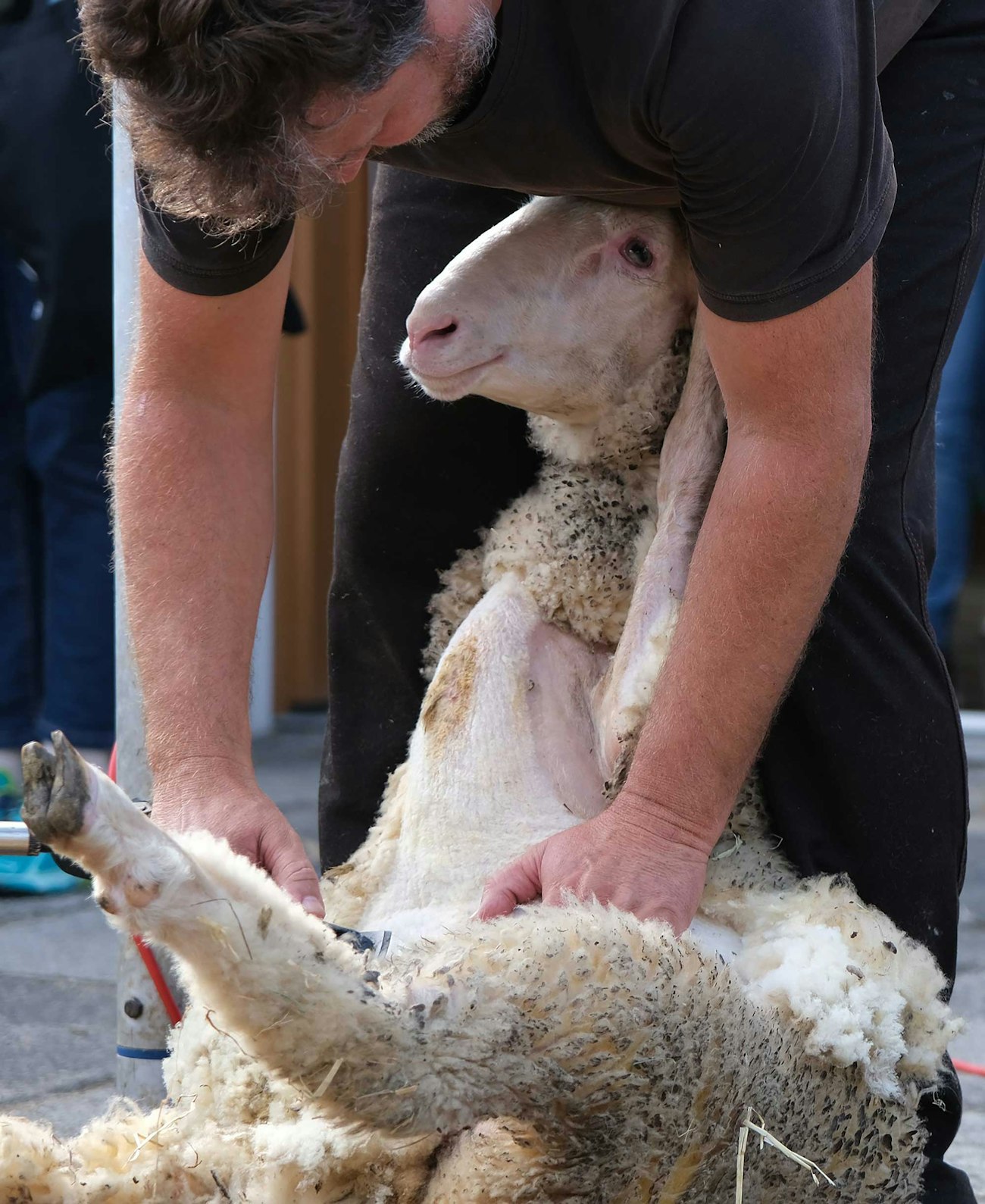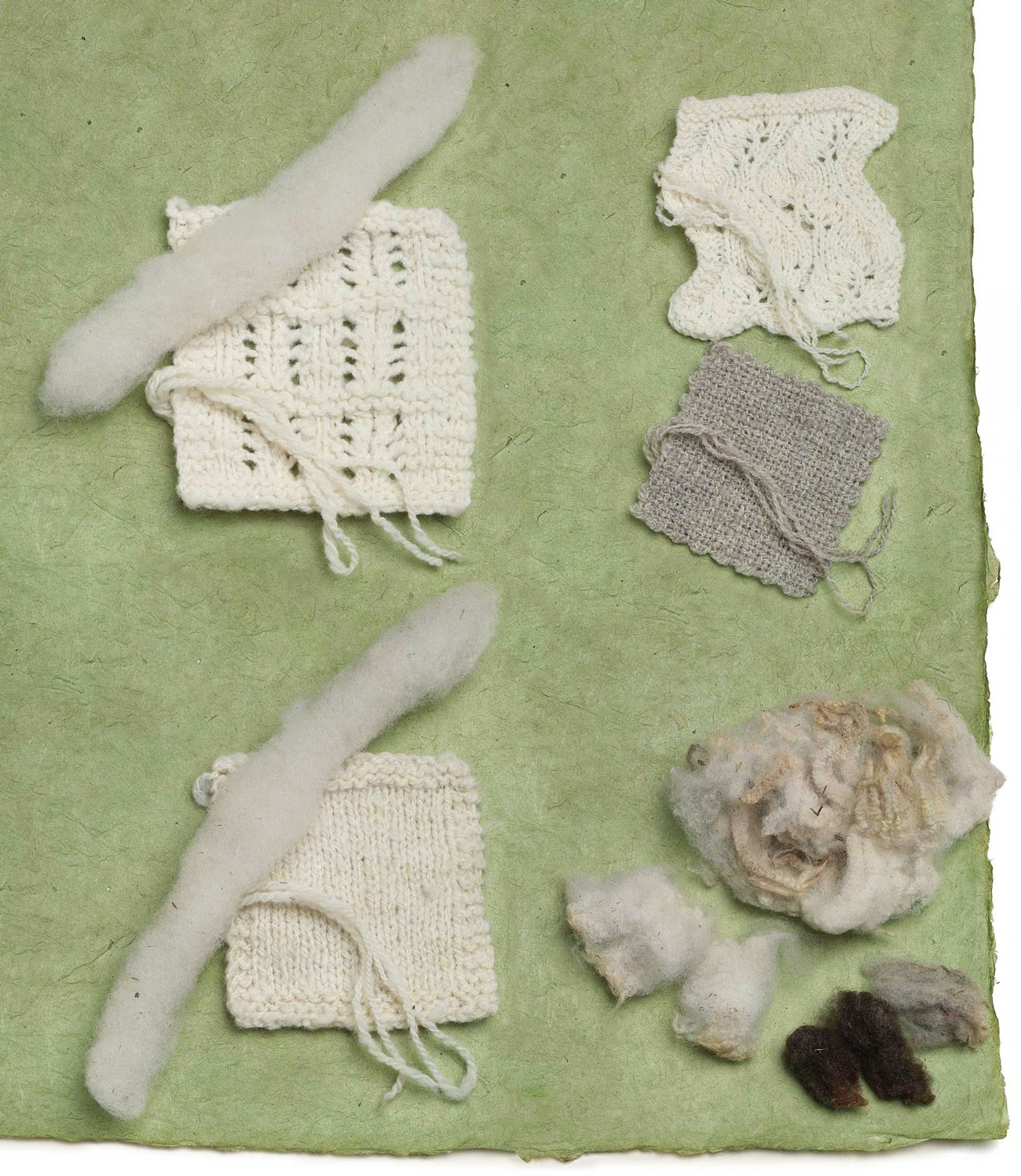When I was a young girl, my mother accidentally got a sheep.
We attended a benefit auction one night in which a lamb was up for bid, either in the freezer or on the hoof. (It was for a good cause, and it has a happy ending.) The vegetarians bid against the carnivores and won, but led by their hearts, they hadn’t really considered what they would do if they won the sheep—they were all well-meaning but underfunded young people living in walk-up apartments in the city.
The next morning, my mother got a phone call, and by the end of it we had agreed to take on the lamb. She was named Georgette after her primary benefactor, and she came to live with three retired horses, some chickens, and a belligerent goat on our small, largely unproductive farm. Georgette (or Sheepish, as my mother called her) seemed to believe she was a goat and grew up unafraid, despite her nickname.
Having accepted the sheep, we also accepted the responsibility for having her sheared once a year. We wrestled her into the back of the truck and took her to the annual shearing event at the county extension service, where other people who had just a sheep or two (not enough for their own shearer) would go. The one time my father tried shearing did not end well; it is extraordinarily difficult to shear a sheep without an occasional nick, and he gets queasy at the sight of blood.
 Shearing is strenuous, awkward work, even for professionals (which my family were not). Photo by Innviertlerin on Pixabay
Shearing is strenuous, awkward work, even for professionals (which my family were not). Photo by Innviertlerin on Pixabay
Sheepish’s wool went on to the trash pile. She was probably a Down breed, which is uncharitably called a “meat breed” (though is more properly a dual-purpose sheep), and she had not been bred for her wool. In truth, Sheepish had only one purpose: to keep the grass down.
Although Deborah Robson’s article “The Down Wools” in the Winter 2015 issue of Spin Off might have inspired us to give her fleece a second chance, there were two problems: we weren’t spinners, and we bedded the horses and sheep alike in shavings. Those shavings worked their way into the fleece and would have been dreadful to remove.
 Deb Robson experimented with several breeds of Down sheep. Top left: Combing the fleece before carding removed most of the debris and yielded a creamy, springy yarn. Top right: These swatches have been combed and spun directly from a minicomb. Bottom left: A rolag of picked and carded fleece retained vegetable matter that made its way into the yarns. Bottom right: Southdown is the breed most likely to produce colored fleeces; short staples reflect the breed’s springy character (and the often messy state of the fleeces). Photo by Joe Coca
Deb Robson experimented with several breeds of Down sheep. Top left: Combing the fleece before carding removed most of the debris and yielded a creamy, springy yarn. Top right: These swatches have been combed and spun directly from a minicomb. Bottom left: A rolag of picked and carded fleece retained vegetable matter that made its way into the yarns. Bottom right: Southdown is the breed most likely to produce colored fleeces; short staples reflect the breed’s springy character (and the often messy state of the fleeces). Photo by Joe Coca
Sheepish lived a long and happy life, and we think she eventually died of a heart attack brought on by obesity from eating too much grain. She was a very happy sheep every day of her life.
Still, in retrospect it might have been fun to have a sample. As Margaret Bouyack of Little House Spinning says in the Summer 2015 issue of Spin Off, “Experiment with everything that seems like a fiber: if you think you can spin it, try it.”
Learn more about Down breeds (such as Dorset Down and Hampshire), as well as Down-like breeds (such as Cheviot and Black Welsh Mountain) in the Down and Related Breeds eBook, also available in the Spin Off Library.
And learn more about the characteristics of “meat sheep” in Devin Helmen’s article here.
Anne Merrow is Editorial Director and a co-founder of Long Thread Media.
Originally published November 3, 2015; updated November 6, 2023.

